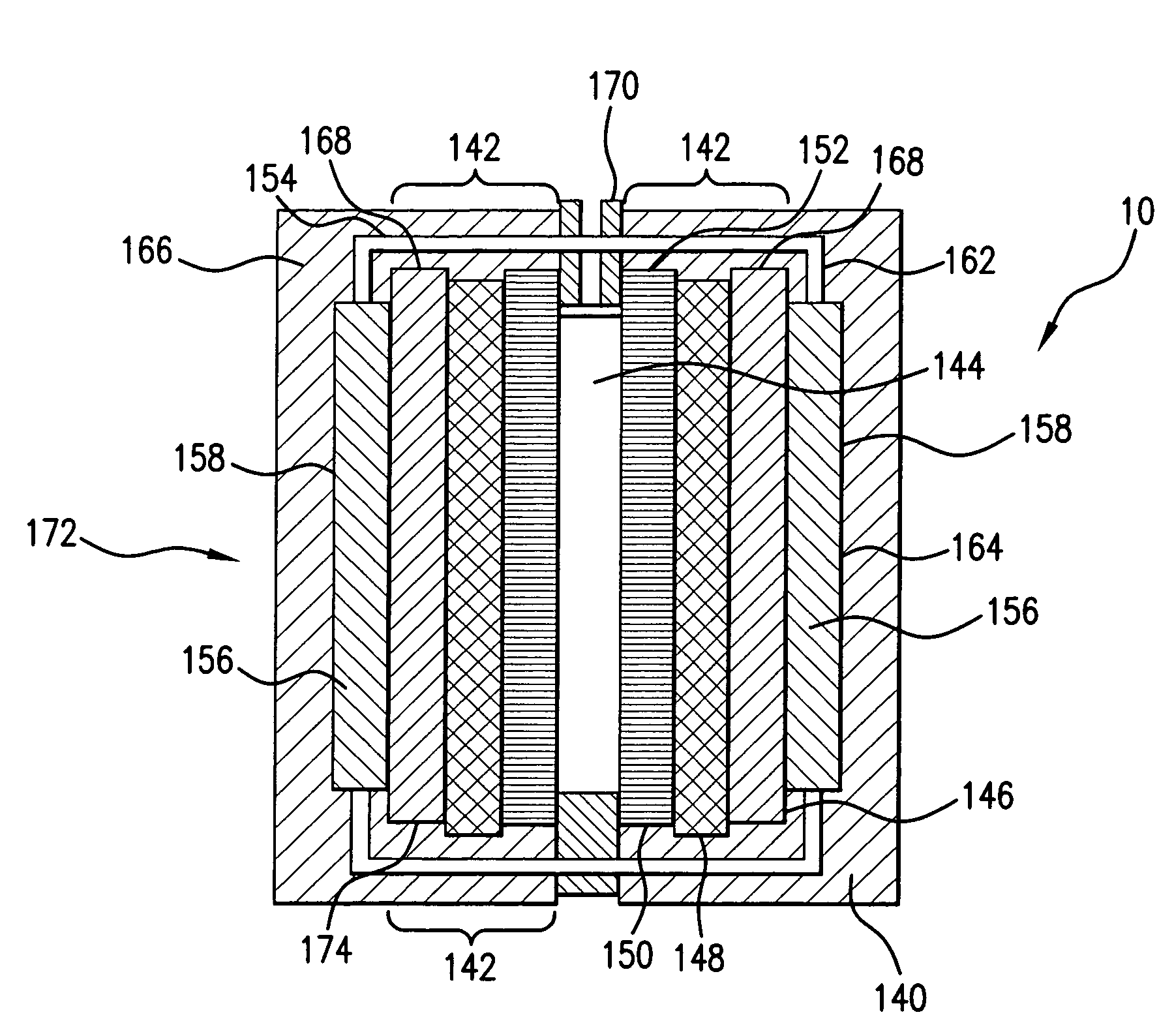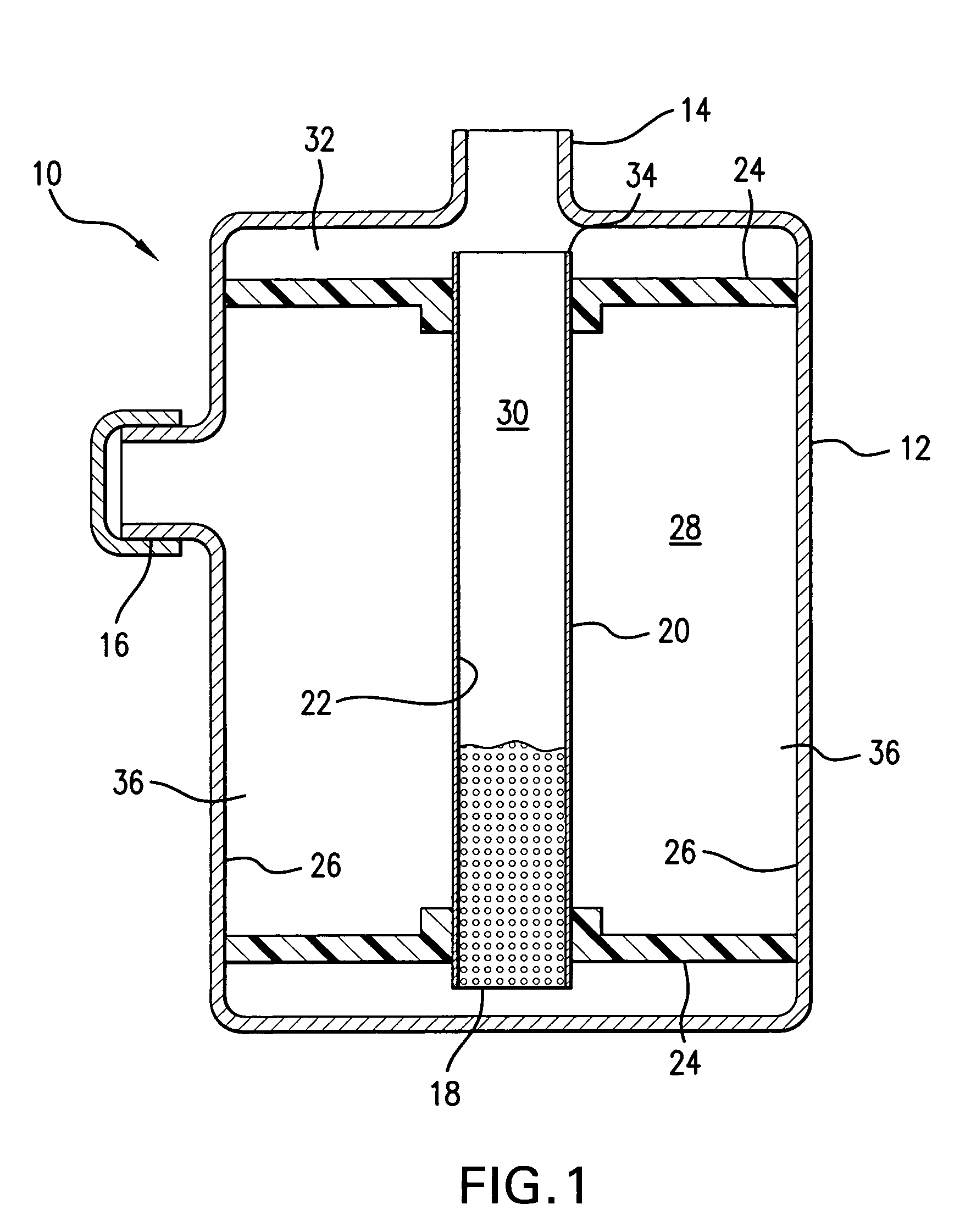Hydrogen generator
a generator and hydrogen technology, applied in the field of apparatus, can solve the problems of not meeting the advancements in miniaturization achieved with pem fuel cells, complicating the use of small consumer applications, and two-tank designs that are not typically directionally independent, and preventing the build-up of reaction products within the device. , to achieve the effect of promoting hydrogen gas generation and preventing the build-up of reaction products
- Summary
- Abstract
- Description
- Claims
- Application Information
AI Technical Summary
Benefits of technology
Problems solved by technology
Method used
Image
Examples
Embodiment Construction
[0023]Refer now to FIG. 1 which shows a cross-sectional view of an illustrative hydrogen gas generation system 10. The hydrogen gas generation system 10 includes a housing 12 having an outlet 14 for removal of the hydrogen gas generated within the housing 12 and a port 16 that can be used to add a fresh fuel solution to the housing 12 or to remove spent fuel solution therefrom as will be later explained below. A catalyst retaining member or reactor member comprising a microporous hollow fiber 18 is positioned within housing 12. Fiber 18 has a first exterior surface 20 and a second exterior surface 22.
[0024]The microporous hollow fiber 18 is held in its position within the housing 12 by seals 24 that are spaced apart along the longitudinal axis of the microporous hollow fiber 18 and the seals 24 may be comprised of epoxy or other sealing material that forms a tight seal against the first exterior surface 20 of the microporous hollow fiber 18 and the interior surface 26 of the housing...
PUM
| Property | Measurement | Unit |
|---|---|---|
| contact angle | aaaaa | aaaaa |
| hydrophilic | aaaaa | aaaaa |
| hydrophobic | aaaaa | aaaaa |
Abstract
Description
Claims
Application Information
 Login to View More
Login to View More - R&D
- Intellectual Property
- Life Sciences
- Materials
- Tech Scout
- Unparalleled Data Quality
- Higher Quality Content
- 60% Fewer Hallucinations
Browse by: Latest US Patents, China's latest patents, Technical Efficacy Thesaurus, Application Domain, Technology Topic, Popular Technical Reports.
© 2025 PatSnap. All rights reserved.Legal|Privacy policy|Modern Slavery Act Transparency Statement|Sitemap|About US| Contact US: help@patsnap.com



